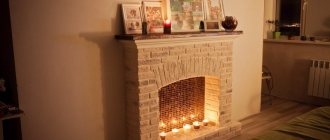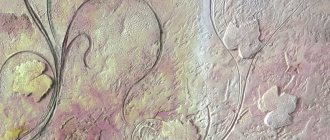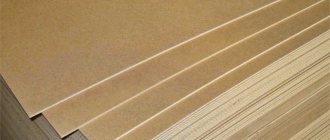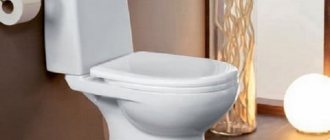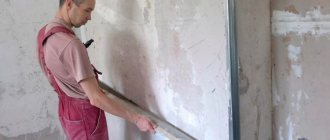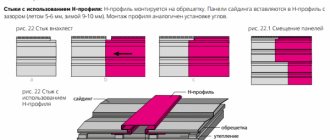Products called “Rust Converter” help solve the problem of corrosion of metal products.
Today there is a wide range of such chemicals on sale. However, the issue of making anti-rust products on their own is of interest to many.
Having decided to use a homemade converter, you must follow the recipe and technology for its use. At the same time, it is worth remembering all the pros and cons of such a product, as well as precautions when using it.
We'll tell you how to make a rust converter with your own hands at home in this article.
Can it be done at home?
The purpose of any rust converter is to convert iron oxides into inert compounds that form a hydrophobic film on the metal surface.
In order to achieve this goal, manufacturers select a specific chemical composition. Each company has its own secret nuances, which it tries not to disclose , so as not to provoke the creation of fakes.
However, the basis of any recipe contains a standard ingredient - phosphoric acid. It reacts with oxides and participates in the formation of a protective phosphate film.
In addition, the converter may include:
- tannins (convert iron oxides into neutral tannate complexes);
- zinc compounds (after reaction with phosphoric acid forms a protective layer);
- corrosion inhibitors (form an additional film, slowing down the corrosion process).
At home, it is easy to find analogues of the main active ingredients and prepare a simple but effective converter. It is prepared from a smaller number of components by conventional mixing in a container.
How does it work
The process is simple. You buy a converter; it usually comes in spray cans. Next, it is sprayed onto the site of the outbreak, then it is advisable for us to leave this place for about half an hour - an hour.
The product does not remove rust at all, if I may put it roughly, it freezes it and prevents it from spreading further. An iron phosphate film forms on the affected surface, which is a protective element. The work period is approximately one to two years, then it is advisable to repeat the procedure.
I would like to note from personal experience that my uncle is a minibus taxi driver and works on his minibus almost every season before winter. And you know, it really rots less when compared with untreated neighboring cars along the route.
But we are wondering whether it is possible to produce it with our own hands, what is the approximate composition. I’ll say right away that there are two compositions, the one that is used in production, and the one that is made at home.
Pros and cons of a homemade product
The anti-rust product, made by yourself, has a number of advantages. However, it cannot completely replace professional converters. Due to the existing disadvantages, many users prefer ready-made store-bought chemicals. For an objective assessment, it is necessary to consider both the pros and cons.
Homemade composition is valued for the fact that it:
It is not toxic to humans, as it consists of harmless substances.- Does not require very complex and time-consuming manufacturing technology.
- Has simple and clear instructions for use.
- Helps achieve rust removal and coating protection.
- It is much cheaper than branded analogues.
The disadvantages of a homemade converter make its use limited and reduce its popularity among motorists, housewives and production workers.
The weak points of the homemade corrosion modifier are:
- The need to find a convenient container and method of application.
- Can only be used with a thin layer of rust.
- Lower efficiency compared to special means.
- The need for mandatory coating of the product with paint or varnish.
What is phosphoric acid and how is it used?
Orthophosphoric acid is a powder that is diluted with water and is used in various industries, as well as medicine. The acid is used in diluted form, 85% aqueous solution, which does not have a pungent odor. The acid is used in the production of household products that are used to remove rust. It is also added to primer mixtures for metal. After treating the surface with orthophosphoric acid, a protective layer is formed that prevents the material from destruction.
How to make, what is included?
Any converter must contain two main substances that react and form a protective film on the metal surface.
Home remedies that do this include citric acid and baking soda. The third component is water, which serves as a filler and medium for the reaction.
The step-by-step algorithm for manufacturing a home converter is as follows:
add 1.3-1.5 liters of citric acid to 1 liter of water;- stir the solution to distribute the acid evenly;
- add 15 g of baking soda to the lemon liquid, mix;
- wait for the end of the chemical reaction (this is about 40 minutes);
- pour the converter into a convenient-to-use bottle.
Citric acid can be replaced in the recipe with oxalic acid. The technology for preparing anti-rust with this organic acid does not change.
Purchased anti-rust products
In addition to home remedies, there are, of course, many professional preparations and tools that can be bought in the store. Here are their main groups.
1. Chemical rust solvents.
Most of these products contain phosphoric or oxalic acid - substances harmful to the body. When working with them, be careful - wear rubber gloves, safety glasses and clothing. As a rule, chemical compositions for rust removal are aggressive liquids that react chemically with metal and iron oxide (rust). As a rule, solutions require a long time to act. If this solution gets on your skin, wash the area of contact with plenty of water and go to the hospital.
2. Rust converters.
These products only stop the oxidation process and protect undamaged parts of the object from it; they do not remove the rust itself. Converters are usually produced in the form of an aerosol. They are very often used as a primer for further painting of the product.
3. Diesel fuel.
Rusted items can be placed in a container and, filled with diesel fuel, left for 2U hours. Then remove these items from the container, clean with a wire brush and wipe with a rag.
4. Tools for removing rust.
These can be either various manual abrasives (paper, steel wool, iron brushes, files) or mechanical devices (grinders, drill attachments). When using abrasives, always start with the coarsest grits and work your way down to progressively finer ones. The mechanical method is applicable on surfaces with sufficient metal thickness.
How to use?
Taking into account the general recommendations for the use of rust modifiers, the characteristics of the homemade product and its degree of activity, the instructions for use are as follows:
- The surface of the rusty metal is cleaned of dirt and dust, and if necessary, a detergent is used.
- If the corrosion layer is thick (more than 100 microns), remove it with sandpaper or a wire brush.
- Check the quality of cleaning by running your hand over the treated area. If the surface is rough, correct it with sandpaper.
- A cloth or rag is generously moistened in the prepared converter and applied to the stripping site.
- Allow the solution to react for a quarter of an hour without lifting the soaked cloth from the treatment area.
- After complete drying, a primer is applied to the surface and covered with paint or varnish.
A converter based on organic acid and soda can be used not only as a “treatment” for rusty metal, but also to prevent corrosion.
DIY rust converter
Rust converters serve to qualitatively modify metal corrosion and acquire protective properties to the damaged surface.
When the product is applied to the structures being treated, a reaction occurs and the rust is cleared. Thanks to the special composition of the converters, a protective film is formed that protects the metal from damage for one to two years. There are phosphating (acid) converters, which quickly stop the development of corrosion and create a layer of manganese and zinc salts, and neutral (natural) converters based on plant tannin.
The neutral rust converter is highly effective and non-toxic.
Additional Tips
The accumulated experience of users and recommendations from specialists can help deal with rust on metal products more quickly and efficiently.
When using a homemade composition, it is worth remembering:
Depending on the degree of corrosion, it is advisable to use more powerful tools to remove rusty deposits: an angle grinder, sandblasting devices.- When using different methods of mechanical cleaning of rust, coarse-grained samples are first used, gradually moving to fine, fine-grained sandpaper.
- Before using the modifier, it must be shaken or stirred to create a uniform distribution of the active ingredients by volume.
- The container in which the ingredients are mixed must be glass, enamel, or ceramic. It is not recommended to use aluminum cookware.
- For convenient application of the product, you can use not only cloth napkins or rags, but also a spray bottle. It helps in cases where contact with the problem area is impossible.
- Each applied layer (anti-rust, primer) must be thoroughly dried. Otherwise, it is washed off by the subsequent layer and becomes ineffective.
It is advisable to use the converter for cleaning and protecting car parts and metal rolling machines, fittings, open parts of metal structures, roofing and other metal products from corrosion.
You will find all the most important and useful information about rust converters in this section.
How to properly remove rust using phosphoric acid
The advantage of phosphoric acid is that it removes loose rust and also forms a thin layer that serves as protection. The acid is capable of corroding rust and providing a protective film in the form of an oily surface.
Methods for removing rust depend on the degree of damage:
- cleansing of elements by complete immersion in the product;
- surface treatment using a roller or spray;
- applied to metal products after mechanical cleaning.
Purification of elements by complete immersion in phosphoric acid
If you have a sufficient amount of the product, you can use the full immersion method to remove rust. To do this, you first need to degrease the element to be cleaned using a detergent composition, and then wash it thoroughly. After this, pour 100 grams of an 85% acid solution into the prepared container and add 1 liter of water. The element to be cleaned is immersed in the solution for one hour, stirring the product periodically. Then the product must be removed and washed well. After such cleaning, the product is washed with another solution consisting of 50% water, 2% ammonia and 48% alcohol. Then the product is washed again with plain water and dried. All stages must be performed in strict sequence. If you do not degrease the product, the cleaning will be uneven, since the product may not corrode normal stains, and additional cleaning will be required. In this way, you can clean any products with varying degrees of rust, but the thicker the coating, the more time you need to keep the element in the solution. If the element is not dried after washing, hydroxide appears on it. Drying can be done using any method.
